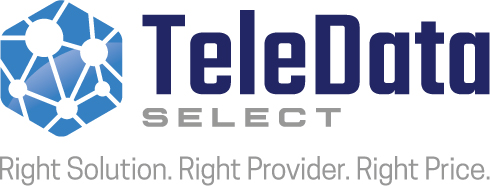I can’t think of any businesses these days that don’t have some sort of internet footprint. Social Media, cloud computing, mobility and consumerization of IT make it easy and affordable for small businesses to deploy systems that were once reserved for the large scale enterprise. With ready access to small business technology, there is also more reliance on these core systems. But there is a downside, small businesses have also become frequent targets of cyber attacks because they may be perceived as more vulnerable and less vigilant. Leaving cyber attacks aside for a minute, there is also the chance of business impact due to acts of God and man. Disruptions due to bad weather or data line cuts can leave a company simply unable to do business. A hard drive failure with all of your company’s customer, financial, order information can be devastating.
make it easy and affordable for small businesses to deploy systems that were once reserved for the large scale enterprise. With ready access to small business technology, there is also more reliance on these core systems. But there is a downside, small businesses have also become frequent targets of cyber attacks because they may be perceived as more vulnerable and less vigilant. Leaving cyber attacks aside for a minute, there is also the chance of business impact due to acts of God and man. Disruptions due to bad weather or data line cuts can leave a company simply unable to do business. A hard drive failure with all of your company’s customer, financial, order information can be devastating.
No one can entirely prevent a service outage. The key to surviving one is to build resilient and redundant systems in to your IT systems. They should also properly assess their risks and exposure to ensure their IT budgets are allocated appropriately.
What can small businesses do to make sure their systems support the ongoing operations with minimal interruption? Three words….Preparation, Preparation and Preparation.
Technology Inventory
A good place to start is to take inventory of your systems and data. It is good policy to document all of your IT assets including hardware, networking devices, application software and data so you can have a complete view of your IT Systems. Make sure you include mobile devices, cloud computing or software as a service (SaaS) systems, as well as, custom applications and legacy systems. A typical inventory would include Make, Model and serial numbers. Purchase dates, prices and warranty information as well as ongoing maintenance logs help to determine aging and End of Life equipment. This in formation also helps with insurance. Speaking of, Keep receipts and take photos of the equipment to assist with any insurance claims.
Technology Risk Assessment
A technology risk assessment shows where a company is vulnerable to a data breach or service outage. The assessment should focus on both physical and cyber vulnerabilities.
A Physical Vulnerability Assessment should include single points of failure in and outside the company. physical accessibility to the computer systems, aging equipment, data back up processes. To name a few.
A Cyber Vulnerability Assessment should include a review on how data is accessed and handled. It should review the software versions in place and how updates are installed. Are appropriate firewalls in place and are the latest virus and malware protections installed and actively protecting your IT systems?
With the inventory and vulnerability evaluation complete, a report showing the likelihood and impact of any identified risk can be created. This is an important tool in assisting companies in budgeting efforts to lower the impact of an event. A good risk assessment identifies as many possible business impacting events which feeds into the Disaster Recovery and Business Recovery plans.
Disaster Recovery (DR) and Business Continuity (BC)
Disaster Recovery is the effort to get a company back to full operations after an incident that fully or partially negatively impacts those operations. Causes can include a power outage, severe weather, cyber attack or data loss. An often overlooked part of a DR plan includes criteria for when to activate it and internal and external communication plans.
Business Continuity on the other hand, are the policies and procedure that go into effect after a disaster event is called and carry the business until the DR plan can be worked and normal business operations are restored.
Teledata Select can assist you in performing your technical risk assessment and can work work with you to implement the tools and processes to help keep your business up and running.
Teledata Select offers a whole range of services that will help you meet your business goals. Starting with a complimentary review of your current telecommunication bills to identify errors and find opportunities for savings, better service and more functionality. We also offer project management for new service implementation and infrastructure installs, including fiber and low voltage cabling. Call me at 404-257-1502 to discuss the SLA’s you have with your service provider. Or send us a note via Contact us to start a no obligation discussion of your specific business technology needs.
 John Hagan is President of TeleData Select, a Telecommunications Consultant located in Atlanta, Ga serving customers throughout the US and overseas. His company provides business solutions for voice, data, mobile and cloud solutions for both large and small businesses. Contact John or their team for a complimentary telecom audit to make sure you’re getting the best value for communication services. The savings you receive could offset the cost of purchasing a new Hosted or Premise VoIP phone system.
John Hagan is President of TeleData Select, a Telecommunications Consultant located in Atlanta, Ga serving customers throughout the US and overseas. His company provides business solutions for voice, data, mobile and cloud solutions for both large and small businesses. Contact John or their team for a complimentary telecom audit to make sure you’re getting the best value for communication services. The savings you receive could offset the cost of purchasing a new Hosted or Premise VoIP phone system.


0 Comments